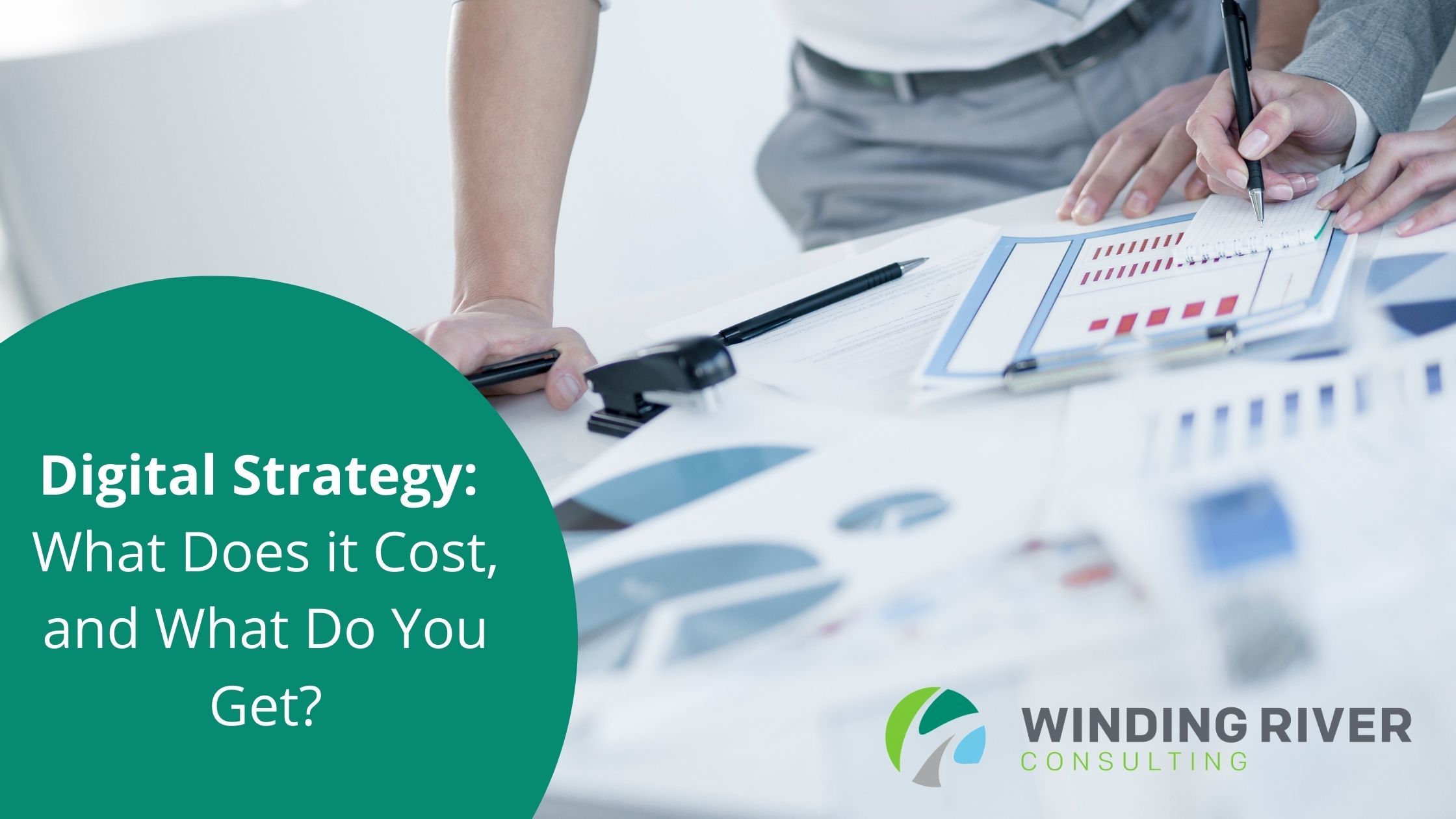5 min read
Fixing the Funnel: How CRO Plugs the Leaks in Your Lead Generation Processes
In 2025, accounting firms are investing more than ever in digital marketing: redesigning websites, investing in SEO, launching content campaigns,...
5 min read
by: Travis Bradshaw on Sep 30, 2022
Table of Contents
Travis Bradshaw is a Director, Consulting Marketing at Armanino LLP, a nationwide top 25 accounting and consulting firm.
These days, it can feel like there are endless marketing concepts you need to understand to be successful. These concepts often get conflated, making things even more confusing. A classic example of that: lead generation and demand generation.
These are two important––and distinct––areas of any marketing strategy, but it’s easy to see why they get mixed up all the time. At first glance, the names of both of these disciplines could easily mean the same thing: they’re both generating new business for your firm. But on a strategic and operational level, they’re very different.
Understanding the nuances and learning how to harness each discipline to build effective marketing campaigns is key to delivering tangible growth. So what are the key differences, and why do they matter in the first place?
Lead generation allows marketers to capture information from prospective customers and then move them through a sales funnel toward the point of conversion. The process is transactional: the marketer provides something of value to the prospect and, in return, the prospect shares their contact details or other forms of data strategically selected to help influence / nurture the relationship. The marketer uses this information to nurture a relationship with the prospect with the aim of turning leads into customers.
A classic example of this is a white paper on an accounting firm’s website. The firm provides a teaser to the content of the white paper; the opening paragraphs, or some attention-catching statistics. The prospect, whose interest is piqued, decides to download the content. They enter their email address, phone number, job title, and company. After they enter this information, they’re emailed a copy of the white paper. In some cases, depending on your CRM, this could be considered a marketing qualified lead (MQL).
Of course, this particular form of lead gen is also known as gated content. It doesn’t have to be a white paper – it could be any magnetic content. A lot of firms are using webinars that people need to register for or even a live event.
Once the marketer has the prospect’s contact details, they can then drop them into a tailored marketing campaign with the goal of converting this initial interest into booked revenue. This typically requires a longer cycle in nurturing before the lead becomes sales ready.
Demand generation is a longer-term play. It generates overall demand for your firm’s services, rather than specific leads, and builds a community around your brand. Successful demand generation takes time and features many different tactics. These include relationship building activities: in-person events and virtual touchpoints.
Lead generation is really a subset of demand generation. Demand generation is broader than the transactional end-game of lead generation, instead focusing on rich connections that deliver enduring value.
Demand generation is a holistic approach that puts your target audience front and center of all your marketing efforts. When firms embrace a demand generation strategy, they elevate their relationships with potential customers past the transactional level into a more strategic realm.
Achieving that takes a lot of time and effort, but the potential rewards are huge. It’s not for everyone. Some firms might choose to focus on lead generation over demand generation. This decision is typically driven by the maturity of the marketing department and the business goals of the firm.
For firms aiming to build community, demand generation work has to happen.
At Armanino, demand generation is where I spend most of my team’s time and energy.
Along the way, we’ve learned a lot about what it takes to build an effective demand generation engine.
Creating a scalable demand generation strategy is not simple.
It demands analytical rigor, strategic vision, and an acute knowledge of your industry. Patience is key: it can take a while to see results from this kind of strategy and it requires a frontload of time investment to be successful.
Here are seven tips to keep in mind as you start the process of building an effective demand generation engine for your firm:
To effectively reach your target audience, you need to understand them. That means knowing who they are, where they congregate, how they behave online, and what they’re interested in.
Build an audience segment that defines the profiles of the people you want to reach. Take time to understand your audience’s pain points, learn to speak in their language, and identify their hangout spots. This knowledge serves as the foundation for your entire strategy––once you know where the fish are, go there and cast your line.
Once you’ve identified the spaces where your target audience spends time, your mission should be to become a permanently invited guest (PIG) within that space. You won’t just be given this status––you need to put in the hard yards to earn it.
Approach this mission with a selfless mindset. Give without expecting anything in return. Invest in relationships by providing free advice and guidance on topics important to your audience. Be patient, not pushy. Your rewards will come later.
As you earn your spot as a permanently invited guest within the community you’re targeting, offer a fresh take on industry events that adds value for your audience. Instead of just sharing a link to a news article, go deeper, commenting on the second-order effects the news might have on your audience.
Are supply chain issues in the news again? Write a LinkedIn post explaining five of the knock-on effects of that for companies in the industry you’re targeting. Don’t be afraid to take a different approach that goes against the grain. This doesn’t mean you need to be controversial––you just want to make people think.
Your fresh perspective is what makes you an actual thought leader, by the way. Once you achieve that standing, potential clients will look for your take.
A key element of generating demand by building community is your online persona. This is a personal branding moment, which can be intimidating.
Putting yourself out there and becoming known requires you to share openly and often. To successfully build an audience and create meaningful relationships, you’ll need to step outside your comfort zone. The good news is, your comfort zone is expandable. Try it out and set a precedent for being personal.
Aligning yourself with recognized brands can give you real momentum, granting you something of a halo effect. Seek opportunities to associate yourself with established brands or bodies in your space. Approach these opportunities with the same selfless mindset you take to building other relationships.
Interact with potential partners on LinkedIn, speak at their webinars, show up at their live events. After an event, don’t forget to follow up with everyone you’ve met to cement your new relationships. Your Customer Relationship Management platform (CRM) can be helpful here.
It’s easy to write off new platforms as not being a good fit for your marketing campaigns, but here’s the reality: you’ll never know if you don’t try.
For professional services firms, LinkedIn is the favored platform because of its focus on professional relationships. But there are also plenty of opportunities on social platforms like Twitter and TikTok.
Don’t underestimate the potential of these platforms. Also, don’t underestimate the amount of work it takes to be successful on them. Being successful on TikTok, regardless of what you see or read, isn’t just a case of posting some trivial videos that go viral. Building an audience demands a structured approach to content creation that incorporates planning, editing, and constantly refining your strategy.
Even great firm leaders operate as though B2B marketing is a sterile practice in which businesses are presented with facts and make pragmatic decisions. But here’s the thing, businesses don’t make decisions––people do. And people are predictably unpredictable.
Tell a story. Capture imagination. Connect in a human-to-human way.
Remember: your prospect’s pain points are the villain.
Craft a narrative that illustrates how, together, you can vanquish this villain.
Don’t bank on abstract technical terms like digital transformation––instead, explain how you specifically reduce stress, meaningfully assist, helpfully guide. Showcase the emotional benefits of your product or service, not just the functional and technical ones.
The concept of demand generation in the virtual world might feel unfamiliar to many accounting firms, but there’s growing acceptance that this digital strategy is a vital component of future growth.
Yes, we want immediate, measurable results. Lead generation can provide short-term wins. But to build a demand generation engine that delivers success for years to come, you’ve got to put in the time.
As your demand generation strategy matures, you’ll reap the benefits. You’ll see prospects in your community start to engage with each other and invite new people into the conversations you’ve created, broadening your reach.
As time goes by, more and more prospects will seek out your services. Focus more of your attention on the people who are closest to converting.
Parlay the relationships and goodwill you’ve built to close more business for your firm.
It’s here that the countless hours invested in relationship building and thought leadership really start to pay off, and growth becomes exponential.

5 min read
In 2025, accounting firms are investing more than ever in digital marketing: redesigning websites, investing in SEO, launching content campaigns,...

4 min read
Today, most accounting firms have a good understanding of who they do business with. While there are some exceptions, the decision-makers you...

5 min read
Every firm is at a different stage on the digital growth journey. Regardless of where they are, every firm needs a strategy. You may be novice in...